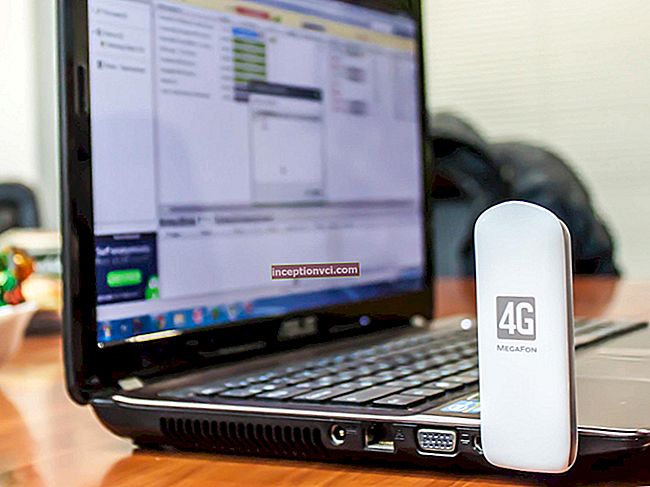Which motherboard to choose from the GIGABYTE collection

GIGABYTE Motherboard Unique Features 333 Onboard Acceleration
GIGABYTE, a leading manufacturer of innovative motherboards, has developed and implemented three new technological solutions specifically for the new generation motherboards based on the Intel P55 Express chipset, combining them into a complex called "333" Onboard Acceleration.The complex "333 Onboard Acceleration" includes three functions - a progressive USB 3.0 bus, a high-speed SATA 3.0 interface (peak bandwidth up to 6 Gb / s) and an efficient 3x USB Power Boost. Next, we will briefly talk about each of them.

USB 3.0 bus
USB 3.0 (also known as SuperSpeed USB) is the third generation of the USB interface that is widely used to connect external peripherals to PCs. The architecture of USB 3.0 differs significantly from its predecessors, primarily in that data transfer over the bus is carried out not by electrical, but by optical method, which is reflected in the design of the connector. Since the USB 3.0 connector also has electrical contacts, it is backward compatible with USB 2.0 and USB 1.0 / 1.1 standards.The main advantage of USB 3.0 is tenfold superiority in speed over USB 2.0 (5 Gb / s bandwidth versus 480 Mb / s). In addition, USB 3.0 is more energy efficient and allows you to detect connected devices significantly faster using the operating system. For comparison, a 1 GB data transfer over a USB 2.0 bus takes 33 seconds, and over a USB 3.0 bus in just 3.3 seconds. The first motherboards for desktop PCs available on the market to support the USB 3.0 bus (controller from NEC) were the new models of GIGABYTE P55A-series motherboards (this bus will appear in other products a little later).

SATA 3.0 interface
The official name of the third generation of the Serial ATA interface is SATA 6Gbps (peak bandwidth up to 6Gbps). The SATA3 interface on GIGABYTE motherboards is implemented using the Marvell 88SE9128 controller (four SATA ports, the ability to create RAID arrays). Currently, the SATA 3 interface is most in demand in a PC equipped with fast solid-state SSD-drives. The advantage in speed of the SATA 3 interface is most noticeable in the example of disk arrays of the RAID 0 level (bandwidth up to 12 Gb / s).
3x USB Power Boost function
Another unique feature of GIGABYTE boards is the energy efficient power supply for the USB ports. The current strength for a typical USB 2.0 port is 500 mA, sometimes this is clearly not enough. To ensure the full functioning of external power-consuming USB devices, in some cases they have to be connected to two USB ports at once through a splitter.This problem does not exist for GIGABYTE P55A series motherboards. The electrical power of each USB port has been increased threefold (the amperage increased to 1500 mA), which means that Y-splitters are no longer needed. In addition, on GIGABYTE P55A-series boards, the current for eSATA ports has been increased to 1500 mA, and the USB 3.0 ports are designed for a current of 2700 mA (the nominal value is 900 mA). All USB high-power ports are equipped with fuses that instantly act in case of overload.
Thanks to the increased energy efficiency of ports, it became possible to connect power-intensive USB devices (for example, external optical drives) to a PC, working without problems with any media. Unlike GIGABYTE P55A-series motherboards, this option is not available to other products. At the same time, it should be understood that the increase in power will not affect the charging time of devices connected to USB ports: it will not change.

24-phase VRM
With the GA-P55A-UD6 motherboard, GIGABYTE has pioneered a technological breakthrough by becoming the first manufacturer to commercialize a 24-Phase CPU Voltage Regulation Module (VRM). Compared to conventional converters, the proprietary 24-phase VRM delivers higher levels of CPU power stability and efficiency and less heat.
How to evaluate the advantage of this new product, because motherboards work quite well without it ?! Indeed, an ordinary user may not even notice the difference. But overclocking enthusiasts, owners of PCs equipped with a water cooling system, will undoubtedly appreciate the new 24-phase VRM module. However, in order about everything.
Optimum power and minimum heating
Additional phases allow you to smooth the transient response of the VRM module. Let's try to explain the meaning of this technical term in ordinary words. Long transient response times on the motherboard can cause two problems. The first is the unstable power supply to the CPU due to voltage ripple (as a result, the instability of the entire system). But this is a mere trifle in comparison with another potential problem - exceeding the permissible voltage is much more dangerous.
Thanks to the proprietary 24-phase VRM module, these problems are no longer relevant. The GIGABYTE module is extremely responsive, delivering high-quality CPU power without ripple. The voltage is close to ideal, as the GIGABYTE requirements are even more stringent than those recommended in the Intel specifications.
It should be understood that a large number of power phases is not everything. A complex of technologies is acquiring a key role. That is why Ultra Durable ™ 3 technology plays a special role in GIGABYTE motherboards - the ideal selection of components and circuitry solutions that ensure stable operation of the VRM module and the stability of the system as a whole.

High efficiency ferrite chokes, low on-resistance FETs and high quality Japanese solid electrolyte capacitors on GIGABYTE P55-series boards.
As you can see in the diagram, the transient response of the 24-phase VRM is much higher than that of the typical solution.

Ripple-free stable voltage is just one advantage of the 24-phase VRM. Another, no less important, is significantly less heating of the motherboard during operation. At first glance, this is not entirely obvious, and therefore requires an explanation.
The fewer components are responsible for powering the CPU (and other components on the motherboard), the higher the load on them. Simply put, they have to cope with the same work that a significant number of components in a 24-phase VRM do (their operating temperature is significantly lower). This is especially important for systems with water cooling, as it is inefficient for the areas of the board around the CPU (temperature distribution is shown in the illustration).
When you build a personal computer based on a GIGABYTE 24-phase VRM motherboard, you'll notice how much cooler it gets, even if it's water-cooled. Since the heat is distributed evenly over a large number of components, none of them is loaded as much as on typical boards (the temperature of the entire board is significantly lower). If you install a cooling system on the CPU with a high-quality radiator and fan, the cooling will be even more efficient.
On the left - a fragment of the GA-P55-UD6 board with water-cooled CPU, on the right - a typical system (radiator + fan). The fan contributes to additional cooling of the VRM area.

Simplified graph showing temperature differences between a typical motherboard and a GIGABYTE 24-phase VRM board. Under heavy load, the GIGABYTE motherboard heats up significantly less than a typical motherboard.

So, to summarize: 24-phase voltage regulation not only provides more stable power to the CPU, but also contributes to less heating of the motherboard, even under difficult conditions. That is why GIGABYTE GA-P55A-UD6 is the perfect choice for overclocking enthusiasts and PC enthusiasts.
Smart TPM function
Since GIGABYTE introduced the first Trusted Platform Module (TPM) products, this technology has become highly sought after in the desktop motherboard market. The TPM module is a small microcircuit soldered on the motherboard that performs hardware encryption of data with extremely reliable 2048-bit keys.The new GIGABYTE Smart TPM solution benefits from the ability to organize interaction between a PC and a mobile terminal using the Bluetooth protocol.What do the encryption chip, Bluetooth and a cell phone have in common, you ask? It's simple. GIGABYTE has developed a method for storing the encryption key in a cell phone, which is accessed by the TPM chip via Bluetooth. As soon as you leave the computer, taking your phone with you, the system is automatically locked.
The main advantage of this solution is reliable protection of personal data on your PC in your absence. To do this, the system easily configures the PSD (Personal Secure Drive) folder, which becomes invisible immediately when the connection between your cell phone and the TPM module is interrupted. This is a reliable way of storing confidential information, since only an authorized user knows about its existence and has access to a PC.
The encryption key can also be stored on a USB stick, but in this case it must be connected whenever access to a PC and personal data is required. Forgetting a USB stick in your computer is easier than forgetting to take your phone. However, as a backup storage (for example, in case you lose your phone), it suits perfectly well. Please note that a third-party Bluetooth adapter is required for Smart TPM to communicate with a cell phone.

AutoGreen function
Like the Smart TPM, the AutoGreen function works over the Bluetooth protocol. It also monitors the communication between the mobile phone and the PC, and as soon as the user is away from the PC, it automatically switches it to one of the two available power saving modes. In the AutoGreen application, you can choose either Suspend mode, in which all data is saved in the system RAM, after which the PC is put into a dormant state (Hibernation mode), or into Standby mode, when all non-critical system components are turned off, but the computer does not go into Hibernation mode ...Most commercially available Bluetooth adapters will work for AutoGreen to work successfully. This function has nothing to do with personal data protection, it is designed to quickly automatically transfer the system to an energy-saving mode.
Smart Dual LAN technology
GIGABYTE Smart Dual LAN technology is two separate functions: combining two independent network connections into one with double the bandwidth and automatically switching between two network adapters when one of them fails. In conventional cards, the user has to disconnect the network cable from one connector and use the other.A motherboard with the Smart Dual LAN function detects the failure of one of the two network adapters and automatically switches to the second LAN adapter.
The teaming function of two network connections allows, given a fast enough switch, to connect both adapters to the network, thereby providing an increase in throughput (up to 68% of the level provided by one adapter).

A motherboard with Smart Dual LAN automatically detects network adapter failure and plugs in a healthy adapter instead. In conventional cards, the user must switch the cable to a working port himself.
ESATA / USB Combo Ports
Another new feature of the GIGABYTE P55 series boards is the eSATA / USB combo ports. Both eSATA and USB devices can be connected to them. The GA-P55A-UD6 motherboard has two combo ports (in addition to the usual set of USB 2.0 ports).At first glance, the advantage of such ports is not obvious. The point is that an appropriate external storage device such as an SSD or even a 2.5-inch eSATA hard drive can be powered directly from the combo port. A separate power cable is no longer necessary. Keep in mind, however, that combo connectors provide the same power as regular USB 2.0 ports, so a power cable is essential for devices with high power consumption.
GIGABYTE Smart 6 ™ Complex
Smart 6 ™ is a collection of six utilities combined with a simple user interface.It includes Smart QuickBoot, Smart QuickBoost, Smart Recovery, Smart DualBIOS ™, Smart Recorder and Smart TimeLock.
- Smart QuickBoot Utility
Has only two functions - BIOS QuickBoot and OS QuickBoot, which can be used together. If the BIOS QuickBoot feature determines that the PC has booted successfully for the last three times in a row, it disables some of the BIOS checks when the PC is turned on, thereby speeding up the system boot.
The OS QuickBoot feature operates in two power saving states - S3 (Suspend) and S4 (Hibernation mode). Thanks to OS QuickBoot, you can not only speed up the system boot (when exiting the Suspend state,), but also save data (in Hibernation mode, in which all information is saved not in RAM, as in the case of suspension, but on the hard disk).
The main advantage in this case is fast loading and energy saving when the PC is not in use. The gain becomes especially noticeable over time, as the amount of unexpected downtime accumulates, in which the PC will not idle.
- Smart QuickBoost function
It will appeal to those who would like to speed up their PC, but due to lack of experience are afraid to resort to self-overclocking. Smart QuickBoost offers three modes: Fast, Turbo and Twin Turbo, loading three levels of system overclocking. You just need to press the button of the desired level, and the utility will take over the rest.
The beauty is that any of the installations is tested and guaranteed not to affect the stability of the computer. All components of the system are accelerated evenly, so there is no need to fear that this or that part will be overclocked too much. During the test phase, a reboot of the PC is required, but for the sake of a 30% increase in CPU performance, you can wait once.
- Smart Recovery feature
Most users are not well versed in backup issues. They almost always forget about him, and remember when it's too late to do anything. Owners of GIGABYTE motherboards will come to the aid of the Smart Recovery utility, which automatically tracks changes to files and, in accordance with the settings, takes them “snapshots”.
The Smart Recovery interface is extremely simple and straightforward. Smart Recovery does not completely replace backup programs; rather, it is an improved version of the Windows recovery system that allows you to bring lost files back to life. The utility allows you to assign the amount of data on the hard disk for backup and the number of simultaneously saved "snapshots" (up to 50% and up to 60 snapshots, respectively). Thanks to Smart Recovery, you can protect yourself from the loss of important documents in the event of a failure.









